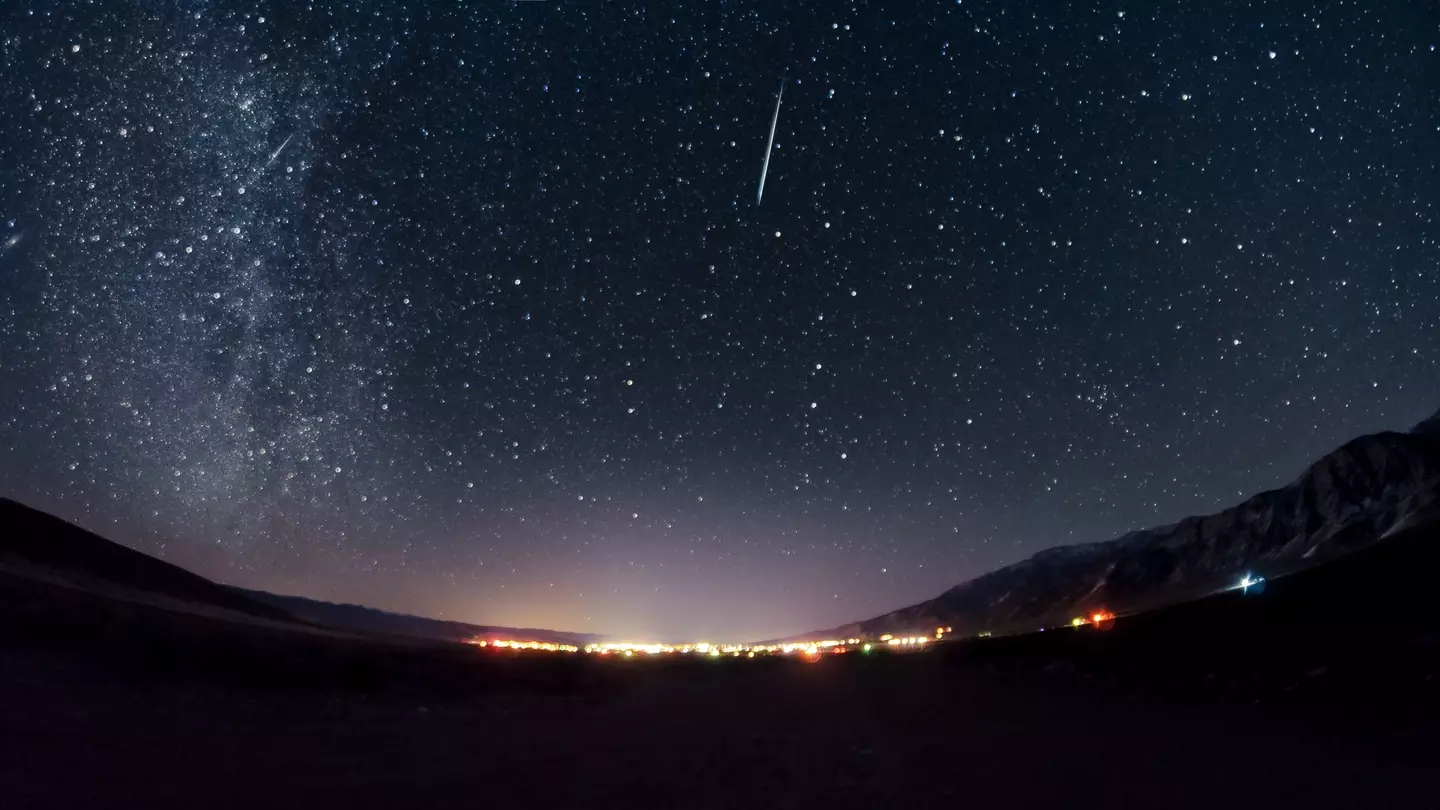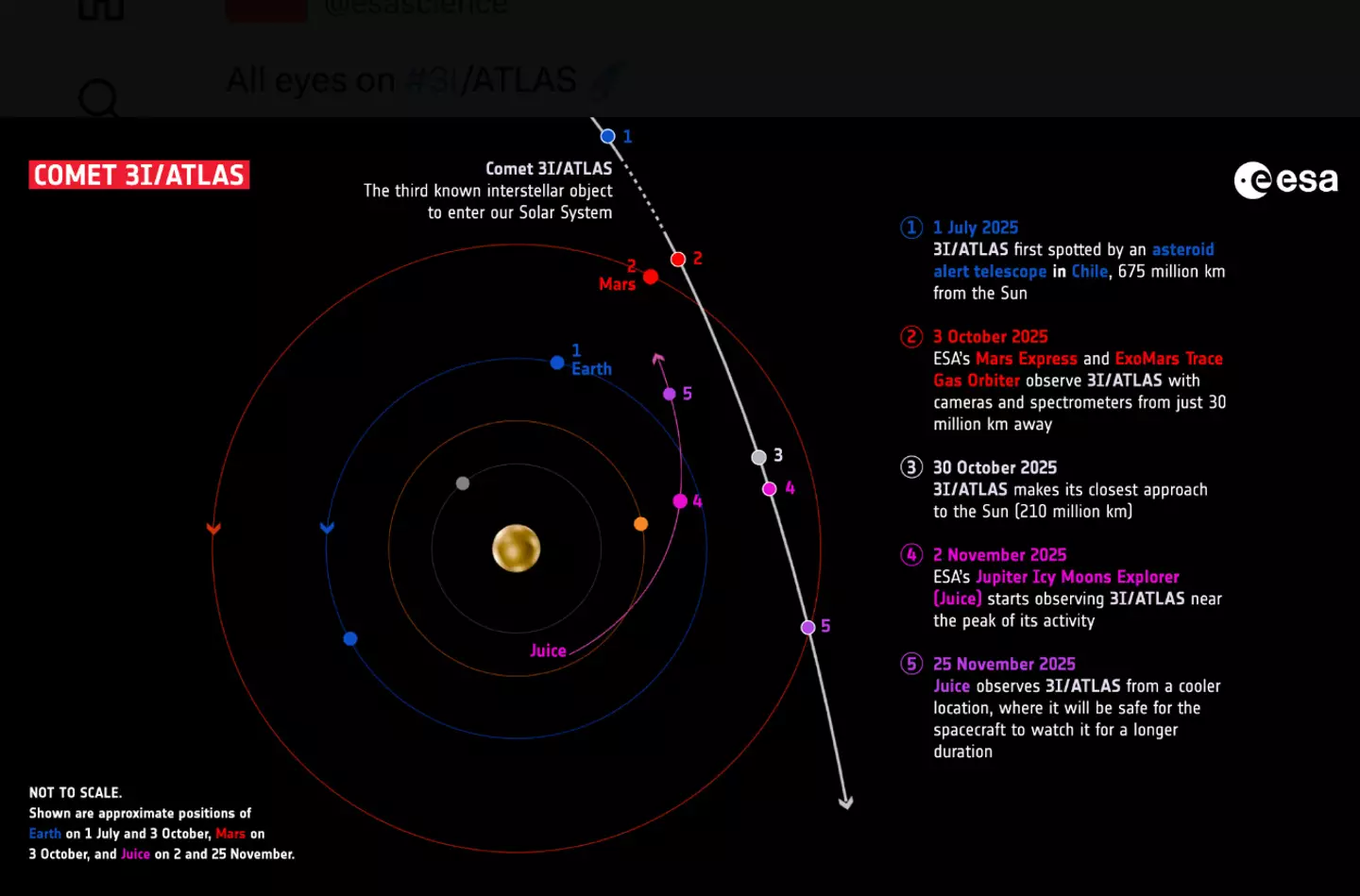The European Space Agency has recently shared insights about a comet currently on its path towards Earth, which has been generating significant interest.
The vastness of space often presents phenomena that intrigue scientists. Occasionally, these celestial events draw particular attention due to their unique characteristics.
Earlier this year, a NASA-funded telescope, the ATLAS survey telescope in Chile, identified an interstellar object, which was later confirmed as a comet heading towards Earth.
Named 3I/ATLAS in July, this discovery marks it as only the third known object to originate from beyond our solar system, joining the ranks of Oumuamua in 2017 and Borisov in 2019.
The comet’s unusual trajectory has sparked numerous questions among both experts and enthusiasts. Traveling at speeds exceeding 41 miles per second, it defies the Sun’s gravitational pull, and some have previously described it as ‘possibly hostile’.
There has been speculation about the comet’s nature, with some suggesting it might be artificial, which raises the possibility of extraterrestrial involvement.

Harvard physicist Avi Loeb has expressed concerns, suggesting that the ‘comet’ might be more than it appears.
He stated: “I believe that we need an international organization that will make policy decisions about such an object.
“We are worried about existential threats from artificial intelligence, from global climate change, from an asteroid impact, but we never discuss alien technology.”
The European Space Agency (ESA) recently shared observations about the object after attempting to capture images of it as it passed Mars between October 1 and October 7.
The ExoMars Trace Gas Orbiter, a collaborative project between ESA and Russia’s Federal Space Agency, redirected its focus from Mars to the comet. At that time, it was approximately 18.6 million miles from the orbiter.

Nick Thomas, the lead for the spacecraft’s imaging system, remarked: “This was a very challenging observation for the instrument.
“The comet is around 10,000 to 100,000 times fainter than our usual target.”
The ESA engaged with the public on social media during the comet’s approach to Mars, sharing their observations on Twitter.
In a post, they noted: “All eyes on #3I/ATLAS ☄️
“Our Mars Express & ExoMars Trace Gas Orbiter will observe the comet around its closest approach to Mars on 3 October 2025, when 3I/ATLAS will be around 30 million km from the red planet. Stay tuned and follow http://esa.int/3IATLAS.”
Despite speculation about potential risks or alien connections, space agencies, including NASA, maintain confidence in their assessment that it is merely a comet.
They anticipate it will pass near the Sun around Halloween, continuing its journey into the depths of space, never to return, and assert it poses no danger, remaining about 170 million miles from Earth during its closest approach.

